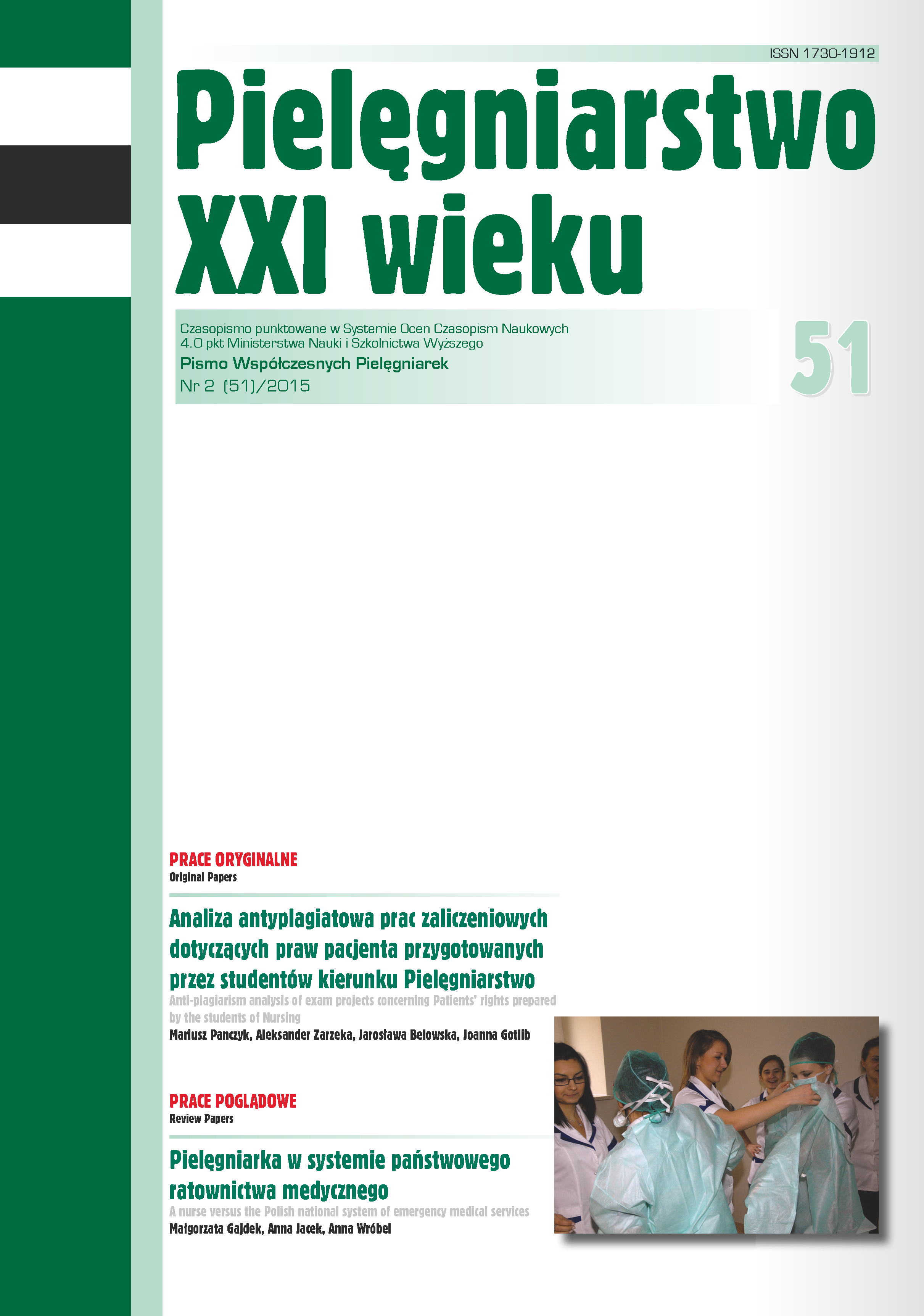Students’ and health care professionals’ attitudes towards people with disabilites – a review of reports
DOI:
https://doi.org/10.12923/p21w-2015-2/25Keywords:
people with disabilities, social attitudesAbstract
STUDENTS’ AND HEALTH CARE PROFESSIONALS’ ATTITUDES TOWARDS PEOPLE WITH DISABILITES – A REVIEW OF REPORTS
There are different sorts of stereotype, prejudice or discrimination against the handicapped individuals, which obviously influences the social attitude towards such people. This article contains an assessment of students’ attitudes toward people with different disabilities. The assessment was done on the basis of literature review. The authors of this paper have briefly described some of the research tools used to assess these attitudes: the scale ATDP – Attitudes Towards Disabled People; scale SADP – scale of Attitudes Toward Disabled Persons; scale DSATHS – Dental Students’ Attitudes Toward the Handicapped Scale; scale CDP – Contact with Disabled Persons Scale and questionnaire IDP – Interaction with Disabled Persons; instrument ATPDSC – Attitudes Toward Physically Disabled College Students.Based on a literature analysis, it might be noticed that medical students or healthcare professionals, like individuals from outside the healthcare sector, do not necessarily have positive attitudes toward disabled people.
References
1. Central Statistical Office. Size and structure of population and vital statistics in Poland by territorial division in 2013. As of December 31. Warsaw 2014: 158-159.
2. Doherty M, Mitchell EA, O’Neill S. Attitudes of healthcare workers towards older people in a rural population. A survey using the Kogan scale. Nursing Research and Practice, 2011. Article ID 352627, 7.
3. Krahe B, Altwasser C. Changing Negative Attitudes Towards Persons with Physical Disabilities: An Experimental Intervention. Journal of Community & Applied Social Psychology. 2006; 16: 59-69.
4. Tobiasz-Adamczyk B. Wybrane elementy socjologii zdrowia i medycyny. Kraków: Wyd. UJ.; 1995.
5. Lam WY, Gunkula SK, McGuigan D, et al. Validated instruments used to measure attitudes of healthcare students and professionals towards patients with physical disability: a systematic review. Jurnal of NeuroEngineering and Rehabilitation. 2010; 9: 47-55.
6. Garvey F, Wigram T, Balakumar T. Measuring general hospital staff attitudes towards people with learning disabilities. Nursing Times. 2010, 106 (31): 10-12.
7. Williams B, Brown T, Boyle M, et al. The Medical Condition Regard Scale (MCRS): an examination of its factor structure using paramedic students. Nurse Education Today. 2013, 33 (9):938-943.
8. Gallagher S, Bennett KM, Halford JC. A comparison of acute and long-term health-care personnel’s attitudes towards older adults. International Journal of Nursing Practice. 2006, 12 (5): 273-279.
9. Uvsal A, Albayrak B, Koculu B, et al. Attitudes of nursing students toward people with disabilities. Nurse Education Today. 2014, 34 (5): 878-884.
10. Holder M, Waldman HB, Hood H. Preparing health professionals to provide care to individuals with disabilities. International Jurnal of Oral Science. 2009,1 :66-71.
11. Paris MJ. Attitudes of medical students and health-care professionals toward people with disabilities. Archives of Physical Medicine and Rehabilitation. 1993, 74 (8): 818- 823.
12. Satchidanand N, Gunukula SK, Lam WY, et al. Attitudes of healthcare students and professionals toward patients with physical disability: a systematic review. Amercian Jurnal of Physican Medicine and Rehabilitation. 2012, 91 (6): 533-545.
13. McKenna L, Boyle M, Brown T, et al. Levels of empathy in undergraduate nursing students. International Jurnal of Nursing Practice. 2012; 18 (3): 246-251.
14. Thompson TL, Emrich K, Moore G. The effect of curriculum on the attitudes of nursing students toward disability. Rehabilitation Nursing. 2003; 28 (1): 27-30.
15. ten Klooster PM, Dannenberg JW, Taal E, et al. Attitudes towards people with physical or intellectual disabilities: nursing students and non-nursing peers. Jurnal Advanced Nursing. 2009; 65 (12): 2562-2573.
16. Godan A, Brajković L, Fortuna V, et al. Attitudes and sterotypes of supporting fields towards the persons with disabilities. Collegium Antropologicum. 2008; 32 (3):783- 791.
17. Matzioy V, Galanis P, Tsoumakas C, et al. Attitudes of nurse professionals and nursing students towards children with disabilities. Do nurses really overcome children’s physical and mental handicaps? International Nursing Review. 2009; 56 (4): 456- 460.
18. Jones LK, Binger TE, McKenzie CR, et al. Sexuality, pregnancy and midwifery care for women with intellectual disabilities: a pilot study on attitudes of university students. Contemporary Nurse. 2010, 35 (1): 47-57.
19. Magnan M, Norris DM. Nursing students’ perceptions of barriers to addressing patient sexuality concerns. Jurnal Education Today. 2008; 47 (6): 260-268.
20. Kong SK, Wu LH, Loke AY. Nursing students’ knowledge, attitude and readiness to work for clients with sexual health concerns. Jurnal Clinical Nursing. 2009; 18 (16): 2372-2382.
21. Au King Wai, Man David WK. Attitudes toward people with disabilities: a comparison between health care professionals and students. International Jurnal of Rehabilitation Research. 2006; 29 (2):155-160.
22. Kowalska J, Winnicka J. Attitudes of undergraduate students towards persons with disabilities: the role of the need for social approval. Polish Psychological Bulletin. 2013; 44 (1): 40-49.
23. Temple B, Mordoch E. Nursing student perceptions of disability and preparation to care for people with intellectual disabilities. Jurnal Nursing Education. 2012; 51 (7): 407-410.
Downloads
Published
Issue
Section
License
Copyright (c) 2024 Magdalena Strugała, Aleksandra Zielińska, Marian Majchrzycki (Autor)

This work is licensed under a Creative Commons Attribution 4.0 International License.




